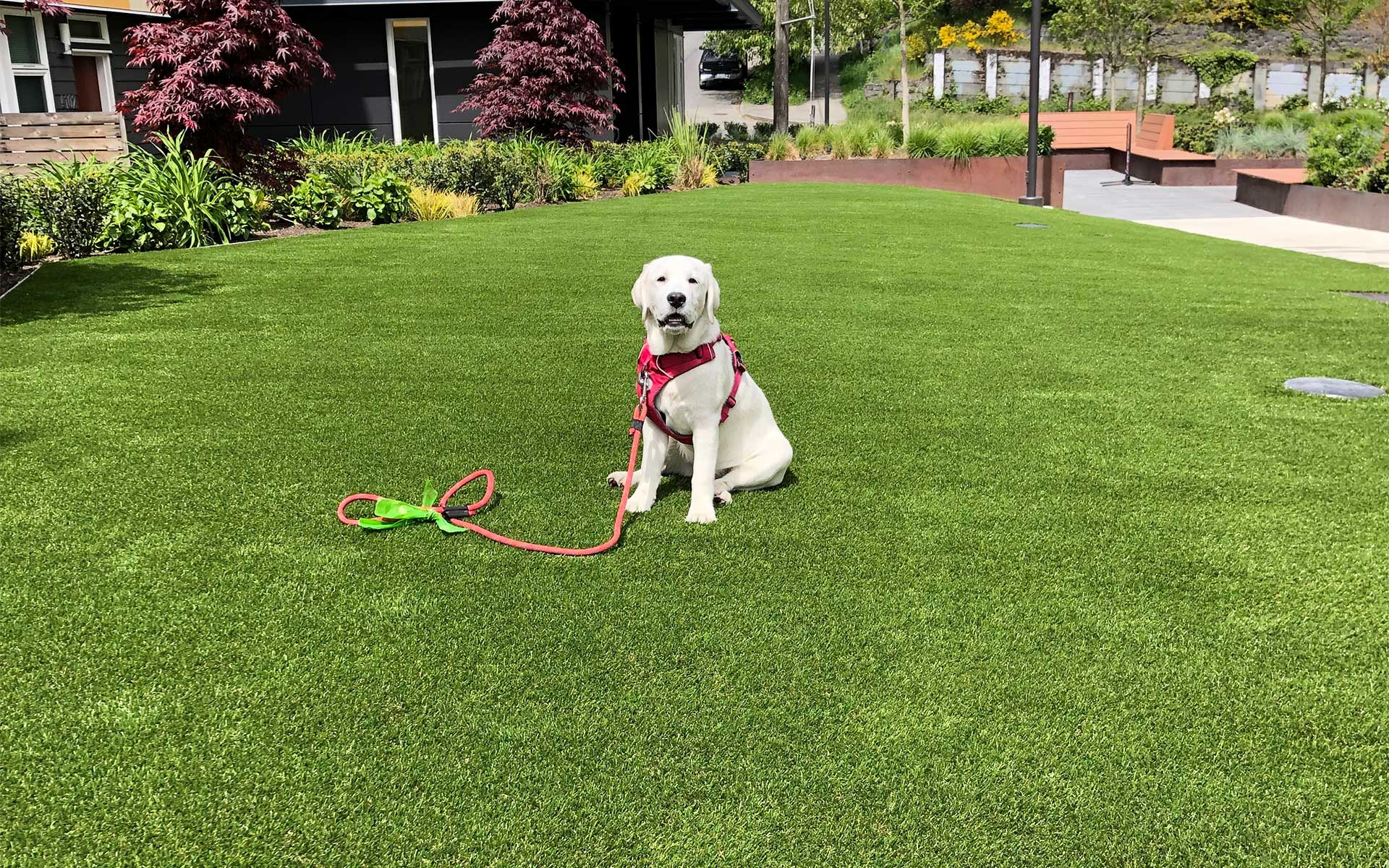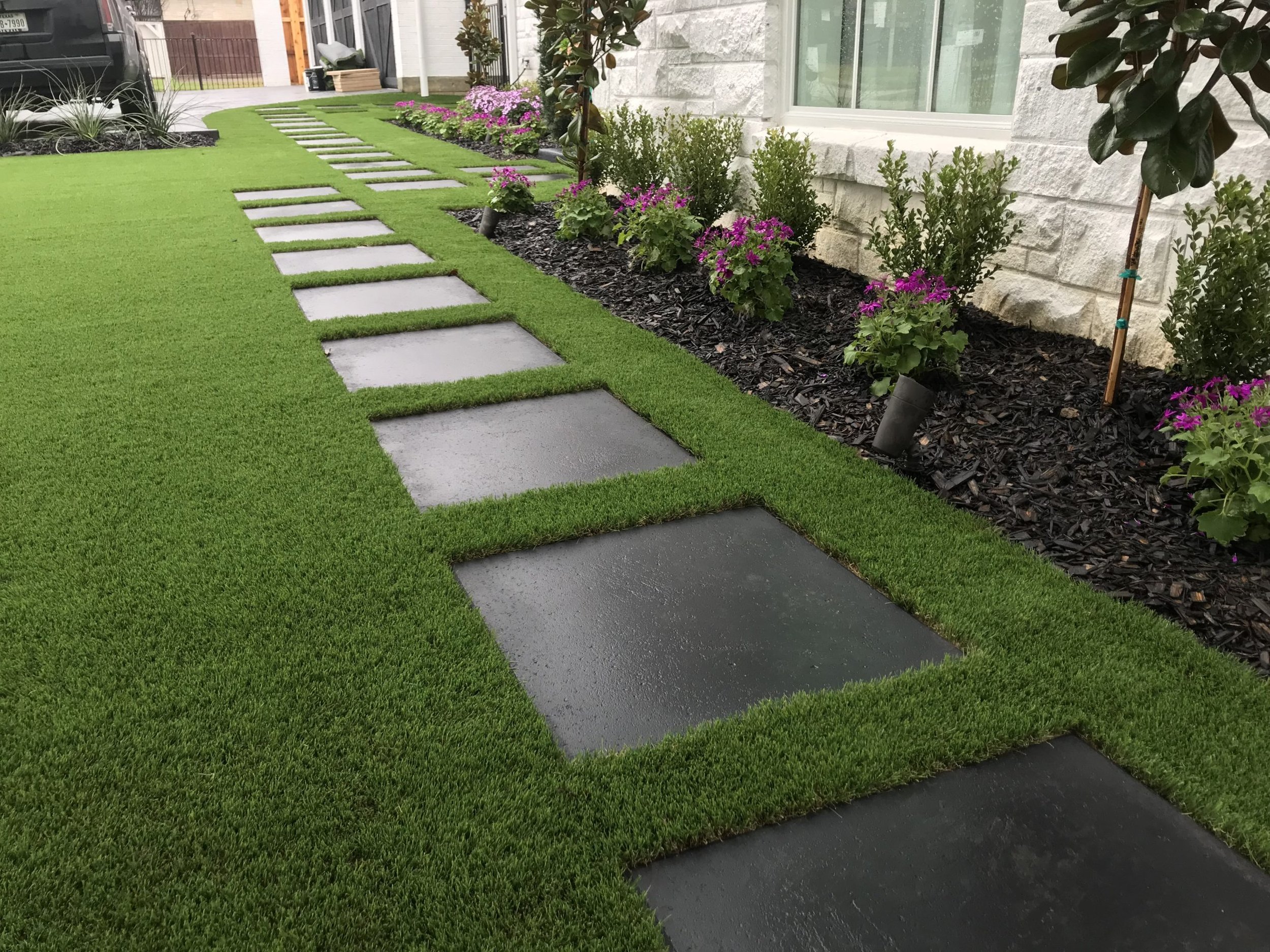Delve Into the Environmental Benefits of Opting for Artificial Lawn Solutions
The fostering of fabricated lawn services presents a compelling chance to attend to pressing ecological obstacles. By substantially reducing water use and reducing the application of harmful chemicals, these choices not just promote sustainable landscaping yet likewise protect neighborhood communities.
Water Conservation Perks
One of the most significant benefits of artificial grass is its capability to save water. In contrast, artificial turf does not need watering, dramatically lowering the general need for water resources.
By getting rid of the need for routine watering, synthetic grass adds to sustainable landscape techniques and assists mitigate the ecological impact of too much water consumption. The conservation of water prolongs to the reduction of runoff, which can lead to soil disintegration and river air pollution.
Additionally, the setup of artificial grass allows towns and home owners to assign water sources more successfully, focusing on important uses such as alcohol consumption water and farming. The shift towards synthetic grass not only promotes liable water use however also aligns with broader environmental goals targeted at preserving natural resources.
As communities significantly prioritize sustainability, the water conservation benefits of synthetic grass offer an engaging instance for its fostering in residential and commercial landscaping projects.
Decreased Chemical Usage
The transition to synthetic turf significantly decreases the reliance on chemical therapies commonly used in all-natural yard upkeep. Standard grass administration commonly entails the application of herbicides, pesticides, and fertilizers to promote growth and control pests. These chemicals can pose risks to human health, neighborhood wild animals, and the setting, adding to dirt and water contamination.
On the other hand, synthetic grass gets rid of the requirement for these dangerous materials. As soon as set up, it needs very little upkeep, mainly containing routine cleansing and infrequent infill replenishment. This decrease in chemical use not just benefits the immediate setting yet additionally contributes to more comprehensive eco-friendly security. By reducing the launch of artificial compounds right into the environment, synthetic grass promotes much healthier soil and water supply.
In addition, the absence of chemical drainage connected with synthetic grass setups aids secure local rivers from contamination, supporting water life and preserving biodiversity. Arizona turf. As areas significantly focus on lasting methods, selecting synthetic lawn provides a sensible service that lines up with ecological conservation goals. Via this shift, residential property owners can take pleasure in rich environment-friendly rooms without jeopardizing eco-friendly health, leading the way for a much more sustainable future
Reduced Carbon Footprint

Moreover, the installment of synthetic grass can lead to considerable water preservation. All-natural lawns call for considerable amounts of water for watering, which not just includes to the carbon impact connected with water removal and therapy but likewise pressures neighborhood water resources. On the other hand, synthetic grass needs minimal maintenance, requiring no watering, consequently substantially minimizing water use and its associated power prices.
Additionally, the longevity of artificial Extra resources lawn adds to its decreased carbon influence. With a life expectancy of approximately 15 years or even more, the demand for regular substitutes is reduced, resulting in much less waste and reduced power usage in manufacturing and disposing of traditional grass options. In general, artificial grass provides a sustainable option for environmentally aware landscaping.
Habitat Preservation
Habitat preservation is a crucial consideration in the discussion over landscaping options, especially when comparing artificial turf to all-natural turf. All-natural grass yards frequently look at these guys call for comprehensive maintenance, including using herbicides, pesticides, and plant foods, which can adversely impact local ecosystems. These chemicals can seep into the dirt and waterways, harming native plants and animals and interfering with regional environments.
Man-made turf eliminates the requirement for harmful chemicals, thus securing neighboring wildlife and preserving the honesty of surrounding environments. The installation of synthetic grass can lead to the conversion of former turf areas right into even more biodiverse landscapes, such as pollinator yards or indigenous plant locations, which can support local wildlife.
Eventually, the transition to synthetic grass not only preserves water and minimizes maintenance initiatives but additionally fosters an extra unified relationship in between human activities and the all-natural atmosphere, promoting habitat conservation in the procedure.
Long-Term Sustainability
Lasting sustainability is a vital consider assessing the advantages of artificial turf over traditional yard yards. One of one of the most substantial benefits of synthetic grass is its sturdiness; it can last approximately 15-20 years with minimal maintenance, whereas all-natural yard needs regular reseeding and he said replacement. This durability reduces the requirement for constant resources, such as water, plant foods, and chemicals, which are important for preserving a healthy and balanced yard yard.
In addition, synthetic grass adds to a reduction in carbon emissions connected with lawn treatment devices. Conventional lawns typically call for gas-powered lawn mowers, trimmers, and blowers, all of which contribute to air pollution. Phoenix turf companies. On the other hand, synthetic grass eliminates the demand for such tools, promoting a cleaner environment
Furthermore, the manufacturing of man-made grass increasingly uses recycled products, boosting its sustainability profile. As suppliers adopt environmentally friendly practices, the ecological impact of synthetic grass proceeds to diminish.

Conclusion
The fostering of fabricated grass solutions presents considerable ecological benefits, consisting of substantial water conservation, lowered reliance on hazardous chemicals, and a lower carbon impact. Synthetic grass aids in protecting all-natural habitats by lessening land disturbance and promoting lasting sustainability through the usage of sturdy products. Collectively, these variables underscore the possibility of artificial turf to contribute favorably to ecological health and wellness and supply a practical option to typical landscaping methods in an increasingly resource-conscious world.
In comparison, fabricated turf does not require watering, dramatically decreasing the general need for water sources. By minimizing the release of synthetic compounds into the ecological community, artificial turf promotes healthier dirt and water systems.
In addition, the installation of man-made lawn can result in substantial water conservation. In contrast, synthetic grass requires marginal maintenance, requiring no watering, consequently considerably minimizing water use and its linked energy costs.
